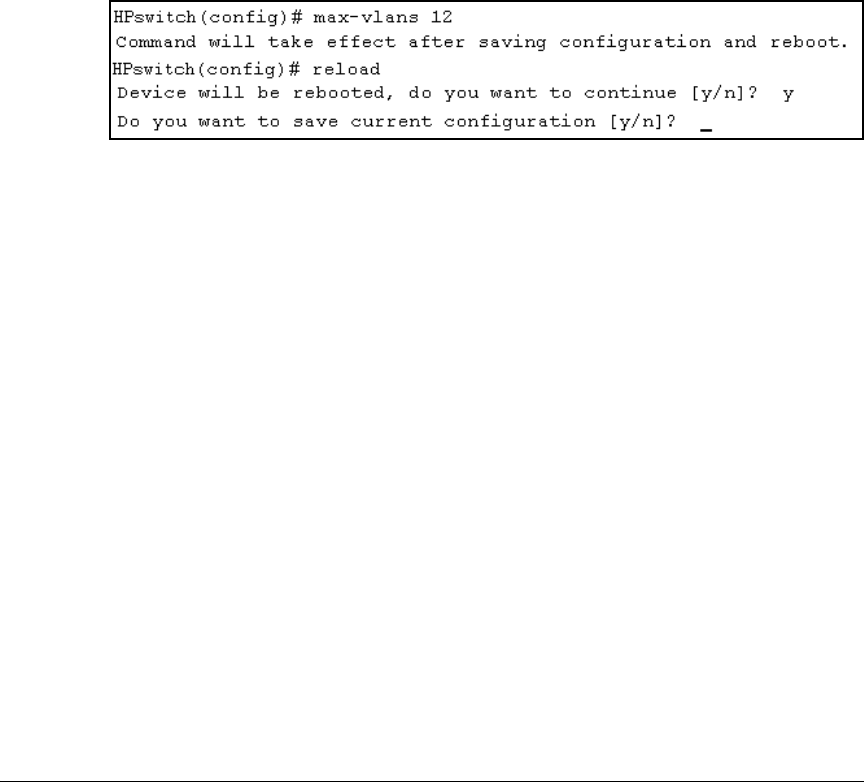
Switch Memory and Configuration
Using Primary and Secondary Flash Image Options
Booting from the Current Software Version. Reload reboots the switch
from the flash image on which the switch is currently running, and saves to
the startup-config file any configuration changes currently in the running-
config file. Because reload bypasses some subsystem self-tests, the switch
reboots faster than if you use either of the boot command options.
Syntax: reload
For example, if you change the number of VLANs the switch supports, you
must reboot the switch in order to implement the change. Reload automati-
cally saves your configuration changes and reboots the switch from the same
software image you have been using:
Figure 6-15.Using Reload with Pending Configuration Changes
Operating Notes
Default Boot Source. The switch reboots from primary flash by default
unless you specify the secondary flash.
Boot Attempts from an Empty Flash Location. In this case, the switch
aborts the attempt and displays
Image does not exist
Operation aborted.
Interaction of Primary and Secondary Flash Images with the Current
Configuration. The switch has one startup-config file (page
6-2), which it
always uses for reboots, regardless of whether the reboot is from primary or
secondary flash. Also, for rebooting purposes, it is not necessary for the
software image and the startup-config file to support identical software fea-
tures. For example, suppose you have just downloaded a software upgrade
that includes new features that are not supported in the software you used to
create the current startup-config file. In this case, the software simply assigns
factory-default values to the parameters controlling the new features. Simi-
larly, If you create a startup-config file while using a version “Y” of the switch
software, and then reboot the switch with an earlier software version “X” that
does not include all of the features found in “Y”, the software simply ignores
the parameters for any features that it does not support.
6-19
